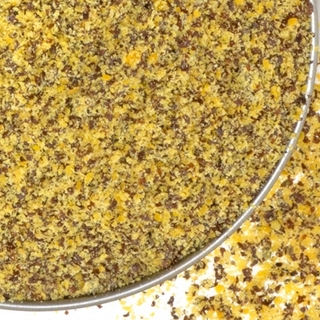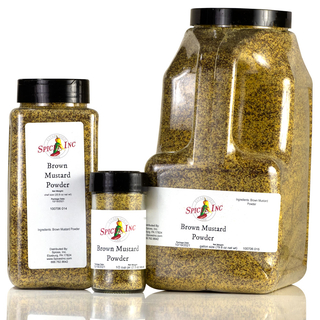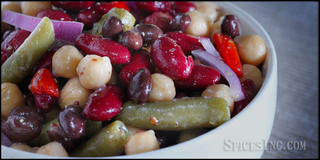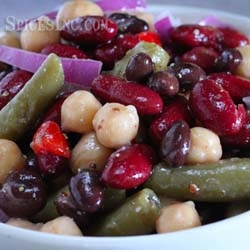Brown Mustard Powder




Brown Mustard Powder
Mustard comes in three varieties - yellow mustard (sometimes referred to as white mustard) is the most common, followed by brown and then black mustard. Brown mustard seeds are spherical and medium in size with a nutty, sweeter more pungent burning note than the more popular yellow mustard.
Yellow mustard seeds are the traditional type we're most familiar with and these are typically used in canning, pickling and in making sausage. The smaller Brown mustard seeds are used in traditional African and Asian recipes. In India, whole cumin and brown mustard seeds are often fried in oil until they begin to "pop".
Ground mustard and mustard seeds are some of the most under appreciated spices here in the U.S. where we tend to think that mustard means yellow ballpark or possibly the "exotic" Dijon every once in a while. While the Chinese, French, Asian Indians and even the Brits have a more sophisticated appreciation of this flavorful seasoning. They understand it's more than just a condiment for hot dogs or burgers!
When exposed to heat mustard's character changes completely what starts as a somewhat bitter taste changes into a delightful pungent flavor that adds layers of complexity to curries, roasted meat, roasted vegetables and stir fries. Knowledgeable cooks keep all three varieties in their spice cabinets.
If you're looking for your mustard to have a spicier flavor and a bit more personality than what yellow mustard provides then brown or black mustard is for you. Brown mustard seeds have a more enhanced mustard flavor than yellow does while black mustard seeds are even more pungent than that brown mustard.
Brown Mustard is indigenous to northern India, China, Iran, Afghanistan and Africa. From the species Brassica juncea our Brown Mustard Seeds are harvested in Canada. There are two varieties of brown mustard one is known as Oriental Mustard and is most popular with the Chinese while the other is a bit darker and more potent and is favored by the Indians.
Our brown mustard powder comes from brown mustard seeds grown in southern Saskatchewan by one farmer.
We like the convenience of using ground brown mustard in spice rubs and marinades and once heated brown mustard releases a savory flavor. We grind our brown mustard in small batches weekly to ensure maximum freshness as once ground these begin to lose their volatile oils.
Brown mustard works well in Indian curry dishes when combined with asafoetida, coriander, cumin, curry leaves and fennel. You'll also find brown mustard partners well with bay, chili powder, dill, fenugreek, garlic, honey, nigella, parsley, pepper, tarragon and turmeric.
In addition to Indian curries use brown mustard with grilled beef, cabbage, robust cheeses, chicken, cold meats, fish, herbs, fruits, garlic, sauerkraut, seafood and sausages.
Helpful hints - If you're making homemade mustard for the first time it's important to know that the temperature of the liquid you use when mixing is critical. You should also take into consideration the intensity of heat level you desire before you start mixing the mustard. If you're looking to maximize the intensity of the heat then mix it with a very cold liquid, if you want a milder mustard flavor blend the powder with a hot liquid. You should refrigerate as soon as you have achieved your desired heat level as refrigeration will bring the mellowing process to an almost complete and immediate halt. If you do decide to use the whole brown mustard seeds dry roasting them will enhance both the aroma as well as intensifying the flavor.
Contents Hide
Frequently Asked Questions
We get lots of questions on mustard seeds and mustard seed powder. Here are some of the most frequently encountered.
Q: What's the difference between yellow mustard seed and white mustard seeds?
A: There is often some confusion between yellow mustard seeds and white mustard seeds. Yellow and white mustard seeds are the same thing. In fact these seeds are mostly a straw yellow color.
Q:What is a prepared mustard?
A: A "prepared mustard" or "made mustard" is dry mustard that is mixed with spices and herbs and then a liquid is added such as beer, water, wine or vinegar. A whole grain mustard is the whole mustard seed that is mixed with spices, herbs and then a liquid.
Q: What is a dry mustard?
A: Dry mustard is when the mustard seed is ground up (may also be called ground mustard or mustard powder).
Q: What is the difference between mustard powder and mustard flour?
A: Mustard flour is extremely finely ground mustard seed. Mustard powder is a coarser grind of the mustard seed. Our mustard powder is coarser than mustard flour would be.
We also carry yellow mustard powder.
Nutrition Facts
Serving Size1 tsp
Amount Per Serving
Calories14
% Daily Value*
Total Fat1g1%
Saturated Fat0g0%
Trans Fat0g
Polyunsaturated Fat0g
Monounsaturated Fat0g
Cholesterol0mg0%
Sodium0.1mg0%
Total Carbohydrate0.8g0%
Dietary Fiber0.5g2%
Total Sugars0.2g
Added Sugars0g0%
Sugar Alcohol0.0g
Protein0.7g1%
Vitamin D0mcg0%
Calcium10mg1%
Iron0mg1%
Potassium17mg0%
*The % Daily Value (DV) tells you how much a nutrient in a serving of food contributes to a daily diet. 2,000 calories a day is used for general nutrition advice. These values were calculated and therefore are approximate. For more accuracy, testing is advised.


